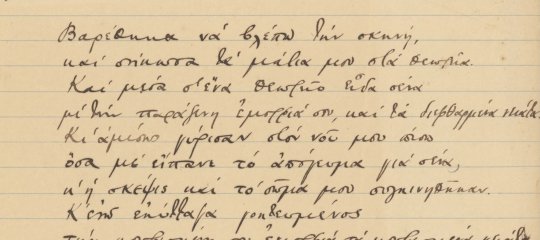La dimension politique des tragédies d’Eschyle
Polyvie Parara, La dimension politique des tragédies d’Eschyle, ADRA- Nancy, De Boccard, Paris, 2010.
(ISBN-13: 978-2-913667-26-0).
Η Πολιτική Διάσταση των Τραγωδιών του Αισχύλου, αποτελεί τον 44ο τόμο της σειράς Etudes Anciennes των εκδόσεων L’Association de la Diffusion De la Recherce sur l’Antiquité (A.D.R.A.), Diffusion de Boccard , Paris, 2010. Το βιβλίο αυτό, στις 416 σελίδες του, εξετάζει τον πλούτο και την επινοητικότητα της πολιτικής ορολογίας του Αισχύλου και αναδεικνύει την επιλογή του ποιητή για διακριτούς πολιτικούς όρους ανάλογους με τα ποιοτικά χαρακτηριστικά της άσκησης της εξουσίας. Η ίδια φροντίδα διακριτής ορολογίας ισχύει και για τους πολιτικούς θεσμούς για κάθε πολιτικό περιβάλλον που περιγράφεται σε κάθε τραγωδία. Με βάση τον πλούτο και την οργάνωση του πολιτικού λεξιλογίου, που όμοιά της δεν παρατηρείται στους άλλους τραγικούς ποιητές, σε συνδυασμό με τις εκδοχές του μύθου και της ιστορίας που ο Αισχύλος επιλέγει κάθε φορά, οδηγούμαστε στο συμπέρασμα ότι τα πολιτικά περιβάλλοντα που περιγράφει ο ποιητής, δεδομένων των συμβάσεων των μύθων, είναι εναρμονισμένα με την ιστορική και πολιτική παράδοση της κάθε πόλης που περιγράφεται. Στο βιβλίο επίσης εξετάζονται οι πολιτικές ιδέες του ποιητή σε σχέση με το πολιτικό περιβάλλον της Αθήνας όπως αυτό αναδεικνύεται στις τραγωδίες του την περίοδο 472 π.Χ.- 458 π.Χ.
Στο πρώτο κεφάλαιο εξετάζεται η οργάνωση των πολιτικών ιδεών στις τραγωδίες του Αισχύλου. Στο δεύτερο κεφάλαιο η πολιτική ορολογία που αναφέρεται στον ηγέτη της πολιτικής κοινότητας. Στο τρίτο η πολιτική ορολογία που αναφέρεται στο θεσμό του Συμβουλίου. Στο τέταρτο η πολιτική ορολογία που αναφέρεται στη Συνέλευση και στο σώμα των πολιτών. Και στο πέπμτο και τελευταίο, εξετάζεται το πολιτικό πλαίσιο των τραγωδιών του Αισχύλου. Η στενή σχέση των τραγωδιών του Αισχύλου με την Ιστορία έχει ιδιαίτερη σημασία τόσο για τη θεωρητική συζήτηση για τη σχέση τραγωδίας, ιστορίας και πολιτικής στην πόλη κράτος της Αθήνας όσο και για την ιστορικότητα των πολιτικών περιβαλλόντων που περιγράφονται- Σούσα, Θήβα, Άργος και Αθήνα- όπως τα αντιλαμβανόταν ο ποιητής και το ακροατήριό του.

- Εισέλθετε στο σύστημα για να υποβάλετε σχόλια











